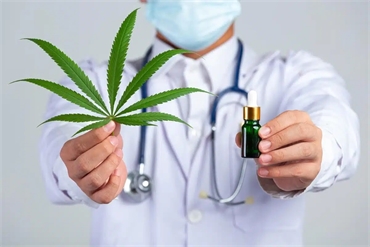Medical Cannabis: Exploring Its Potential in Modern Healthcare
October 04, 2023

Over the past few years, the healthcare industry has undergone a notable change with the rise of medical cannabis as a viable treatment option. Throughout history, cannabis has been recognized and used for its medicinal properties in different cultures and time periods. Now, it is reclaiming its position in modern healthcare. This article explores the historical background, components, medical uses, and challenges associated with medical cannabis, offering insights into its potential role in contemporary medicine.
The Historical Context of Medical Cannabis
Cannabis has a long history as a medicinal plant, with various cultures embracing its therapeutic properties. Ancient civilizations like China and Egypt acknowledged its benefits, and it was commonly used in Western medicine until it was prohibited in the early 20th century. The resurgence of medical cannabis today is anchored in this rich historical legacy.
The Components of Cannabis
Cannabis contains two main compounds that are of interest: THC (tetrahydrocannabinol) and CBD (cannabidiol). THC is known for its psychoactive effects, while CBD does not produce the same psychoactive response and is valued for its potential therapeutic benefits. Both compounds interact with the body's endocannabinoid system, which plays a vital role in maintaining overall balance, and in online weed Canada dispensaries, it’s possible to find strains with higher THC or CBD content.
Conditions Treated with Medical Cannabis
Medical cannabis has shown great potential in treating a variety of medical conditions. Both research and individual accounts have suggested its effectiveness in relieving chronic pain, reducing seizures in epilepsy patients, and providing relief for those with multiple sclerosis, among other benefits. Numerous real-life stories highlight the positive impact that medical cannabis treatment has had on individuals' lives.
Challenges and Controversies
Medical cannabis offers significant potential benefits, but it also comes with challenges and controversies. Side effects, dependency, and misuse are legitimate concerns. Furthermore, the legal and regulatory variations across regions have created a complex landscape for patients and healthcare providers alike.
The Role of Healthcare Professionals
In the realm of medical cannabis, the involvement of healthcare professionals is crucial. They play multiple roles as guides, educators, and evaluators to determine if a patient is suitable for medical cannabis treatment. Through their supervision, they ensure the safe and effective usage of cannabis, provide precise dosing recommendations, and monitor patients continuously.
Research and Advancements
Research on medical cannabis is a continuously evolving area. Ongoing clinical trials and studies are constantly revealing new uses and improving existing treatments. These advancements have resulted in the development of cannabis-based medicines, which provide more reliable and consistent dosing options for patients.
Patient Access and Advocacy
Many patients still face difficulties in accessing medical cannabis. Advocacy groups are crucial in raising awareness, advocating for policy changes, and providing patients with the necessary information to navigate the complicated process of obtaining medical cannabis. There are resources available to assist patients in seeking access to this potentially transformative treatment.
Conclusion
Medical cannabis is gaining recognition as a powerful tool in modern healthcare, drawing from centuries of historical use and recent scientific breakthroughs. Despite facing challenges and controversies, its ability to alleviate suffering and enhance patients' quality of life cannot be denied. It is essential for patients, healthcare professionals, and policymakers to work together in shaping a future where medical cannabis is considered a safe, effective, and easily accessible treatment option as the field continues to advance.

